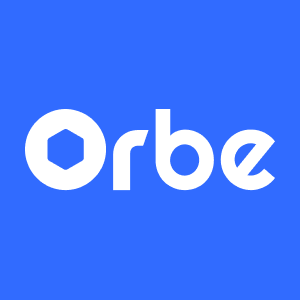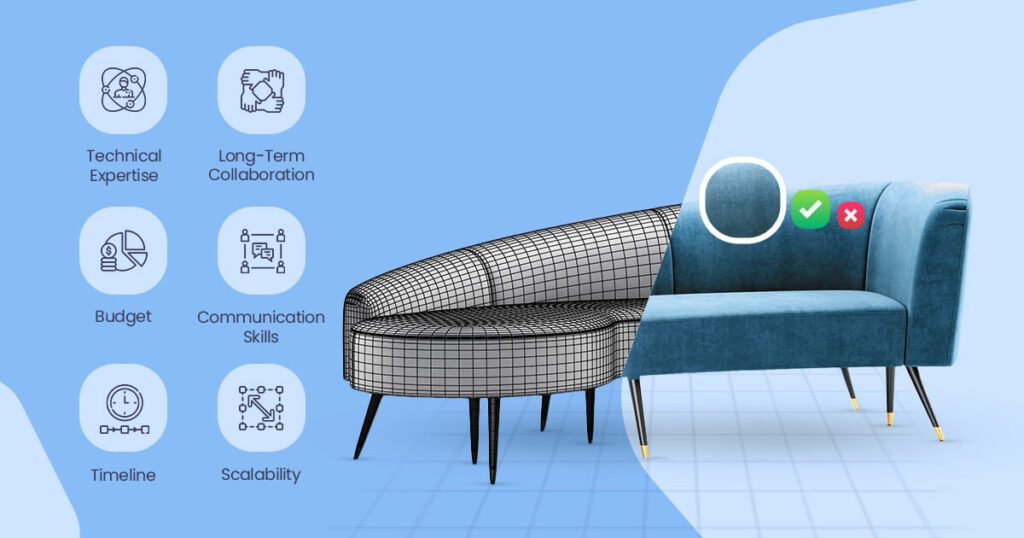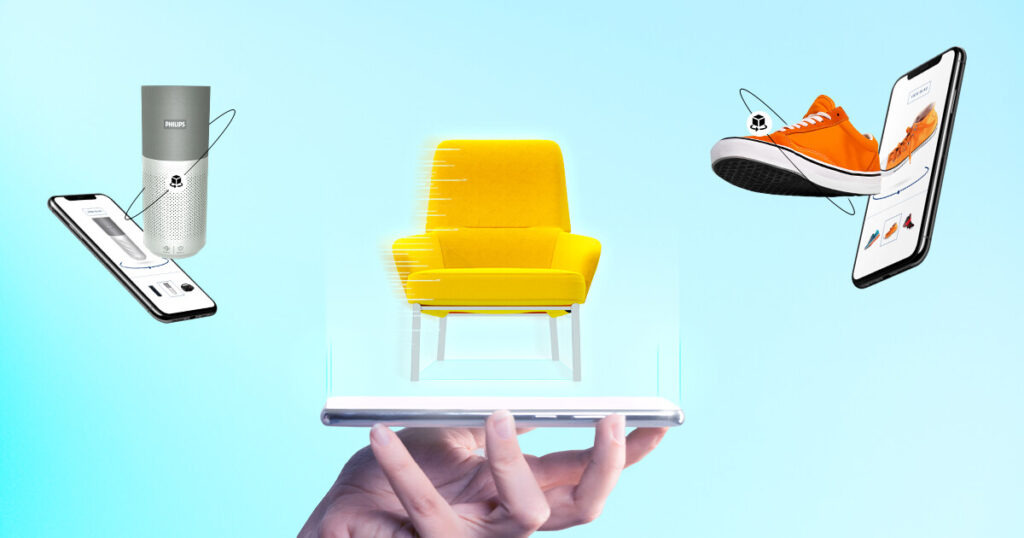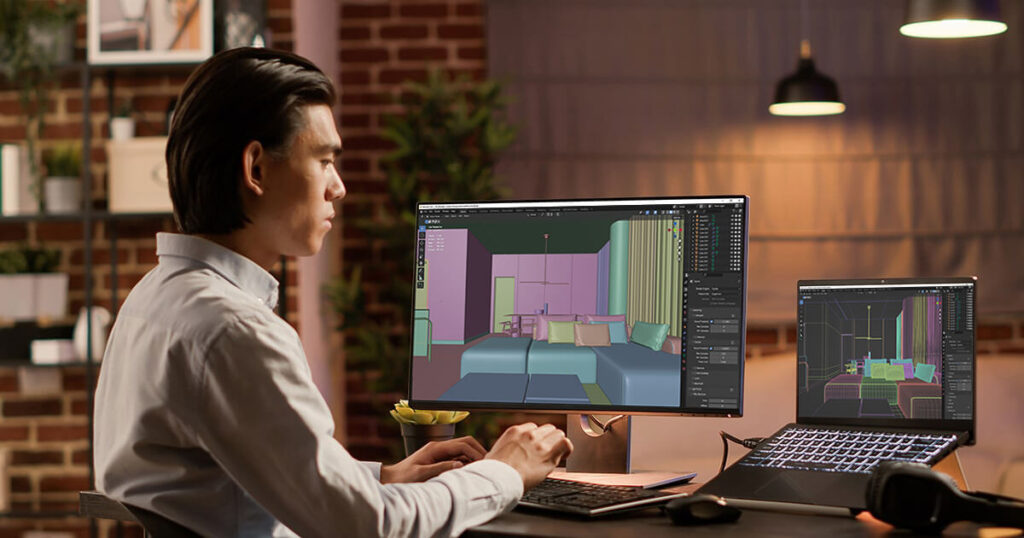The best software for 3D modeling has completely changed how furniture makers and designers think through, make, and market their goods, revolutionizing the furniture sector. 3D modeling delivers unmatched flexibility and efficiency during the design process by providing a virtual depiction of a physical product. With the help of this digital tool, artists may experiment with various shapes, materials, and finishes from the first sketches to the finished product, which eventually results in better designs and lower prices.
It can be intimidating for individuals who are unfamiliar with 3D modeling to deal with the wide range of software choices. For optimal productivity and intended outcomes, selecting the appropriate instrument is crucial. Providing a thorough overview of widely used best software for 3d modeling that is appropriate for novices, this tutorial seeks to demystify the process. You may make an informed choice and start your 3D modeling adventure with confidence if you are aware of your unique demands, ability level, and project specifications.
Learning 3D modeling can open up a world of creative opportunities for everyone, whether they are a student, hobbyist, or ambitious furniture designer. You can easily turn your design concepts into visually striking presentations that attract viewers and propel company success with the correct software and advice.
Criteria for Selecting the Best 3D Modeling Software
For novices, selecting the best software for 3D modeling software is essential to a smooth learning curve and effective workflow. Several important aspects need to be taken into account while choosing a choice:
User-friendliness and Learning Curve
A positive learning experience requires an interface that is easy for beginners to use. The program must to have tutorials and explanations that are easy to understand. Users may understand key topics without feeling overwhelmed thanks to a gradual learning curve. The best software for 3d modeling should be more user friendly.
Features and Tools Available for Beginners
Although sophisticated features are valuable, novices require a strong foundation. Seek for software that provides the fundamental tools needed to draw simple shapes, work with objects, and apply textures and materials. Ideal simplicity and versatility should be well-balanced. The best software for 3d modeling should be user friendly features and tools.
Community Support and Resources for Learning
A vibrant community can be very helpful to newcomers looking for direction and motivation. Video materials, tutorials, and discussion boards on the internet help speed up learning and problem-solving. Collaborative environments are fostered by strong community support systems.
Cost and Availability of Free Trials
The selection of software might be influenced by financial limitations. Take the price of several choices into account, such as perpetual and subscription-based licenses. You may test features and compatibility before making a purchase with many software suppliers offering free trials.
Novices can pick the best software for 3d modeling that fits their needs, ability level, and budget by carefully weighing these factors.
The Best Software for 3D Modeling for Beginners
Blender
- Overview of features: Blender is a well-known free and open-source program with an impressive toolkit. Among the many capabilities it provides are modeling, sculpting, animation, rendering, and video editing. Though first intimidating, its many features make it a well-liked option for novices and experts alike. Nowadays blender is best software for 3d modeling.
- Advantages for beginners:
- Free: No payment in advance.
- Open-source: A sizable and vibrant community offering information and assistance.
- Versatility: encompasses a broad variety of 3D creative jobs.
- Scalability: Increases with the user’s skill level.
Tinker cad
- Overview of features: Tinker cad is an intuitive, cloud-based program made especially for novices. It focusses on intuitive modeling techniques and has an easy-to-use interface. Ideal for drawing simple shapes and putting them together to create more intricate designs.
- Advantages for beginners:
- Ease of use: The UI is intuitive, and the tools are easy.
- Free: No installation required.
- Online collaboration: Collaborate and share designs with others.
- Ideal for beginners: solid basis for understanding the principles of 3D modeling.

Sketch Up
- Overview of features: Architects, interior designers, and product designers frequently use Sketch Up. Users may easily and rapidly construct 3D models using it because of its emphasis on efficiency and simplicity.
- Advantages for beginners:
- Intuitive interface: Simple to use and learn.
- Design-focused: Robust instruments for producing product and architectural designs.
- Big community: Lots of tutorials and resources available.
- Free version: Provides fundamental functions for novices.
Fusion 360
- Overview of features: A full program that combines CAD, CAM, and CAE features is called Fusion 360. Fusion 360 is a strong tool for product design, engineering, and production even if it has a high learning curve.
- Advantages for beginners:
- Versatility: Addresses a range of product development topics.
- Cloud-based: Files may be accessed remotely.
- Free for new businesses and students: An inexpensive choice for novices.
- Strong industry support: Professionals from a variety of areas use it.
ZBrush Core
- Overview of features: Although its primary use is digital sculpting, ZBrush Core can also be used for basic modeling tasks. It is quite good at making detailed models and organic shapes.
- Advantages for beginners:
- Intuitive sculpting: Models are simple to form and perfect.
- Emphasis on organic forms: Perfect for designing products and creating characters.
- Simplified interface: Core is easier for beginners to use than complete ZBrush.
Tips for Getting Started with the best software for 3d modeling
Recommended Tutorials and Online Courses
Although learning 3D modeling can be intimidating, there are lots of tools available to help you. Online courses and tutorials provide structured learning pathways that span everything from fundamental ideas to sophisticated methods. A plethora of both free and paid options are available on websites like Demy, Courser, and YouTube. Seek out courses suited to the program and proficiency level you have selected. Recommended tutorials and courses help to start with the best software for 3d modeling.
Importance of Practice and Experimentation
As with other abilities, 3D modeling gets better with practice. To create your own special method, try out various instruments, strategies, and approaches. Make errors; they are important teaching moments. Don’t be scared to make them. As your confidence improves, begin with simpler projects and progressively build in complexity. Preferable best software for 3d modeling helps to make more practice
Engaging with Online Communities and Forums
Taking part in online communities and forums can be quite beneficial. In addition to exchanging work and receiving assistance from others, you may build relationships with other 3D modeling aficionados. You can make connections with a global creative community by using websites such as Reedit, specialized forums, and social media groups.
Through the integration of methodical instruction, practical experience, and peer assistance, you can establish a robust 3D modeling base and realize your artistic objectives.
Conclusion
Choosing the best software for 3D modeling software is a necessary first step for learners starting their creative profession. You may elect an instrument that best suits your aim and learning style by taking into account elements like pricing, social help, functionality, and ease of use. Recall that there is no one-size-fits-all respond, so don’t be frightened to experiment with different software choice in command to find the one that works best for you.
FAQ
What is the best 3D software for beginner?
Best 3D software for beginners: Tinker cad (basic, web-based), Blender (free, powerful), and Sketch Up (easy, intuitive). Select what you want to create (animations, models, etc.) as your guide. To determine what works best for you, try free trials or demonstrations.
Which system is best software for 3D modeling?
The greatest option for 3D modeling is usually Windows. Strong performance for difficult work, an extensive community for support and resources, and the largest selection of software alternatives are all provided by this product. But while Linux offers affordability and customization, mac OS delivers dependability and an intuitive user interface. Whatever approach works best for you will ultimately rely on your personal tastes and requirements.
What is the top 5 3D software?
The ideal 3D program will rely on your unique requirements, however these are five top choices from the industry:
- Blender: It is flexible, open-source, and free for modeling, animation, and rendering.
- Autodesk Maya: Industry norm for modeling, animation, and visual effects.
- Autodesk 3ds Max: Excellent for creating video games, architecture, and products.
- Cinema 4D: Strong rendering capabilities and ease of use make it a popular choice for motion graphics and advertising.
- ZBrush: Perfect for high-resolution model creation and digital sculpting.
Remember: Every piece of software has advantages and disadvantages. Try demonstrations to find the best software for 3d modeling.
Which software is best for 3D work?
Your project will determine which 3D program is best. Blenders are excellent for novices, flexible, and free of cost. It is widely accepted that Maya and 3ds Max are industry standards for modeling and animation. Motion graphics are a forte of Cinema 4D. For sculpting, ZBrush is perfect. When selecting, take your demands (animation, modeling, sculpting) and financial constraints into account.








